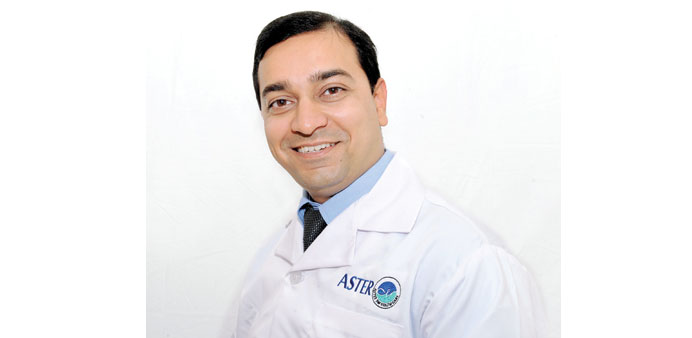Celebrating the importance of laboratory medicine services on International Pathology Day
By Dr Chirag Parmar
International Pathology Day, established by Royal College of Pathologists, United Kingdom, is observed to recognise and celebrate the effective contributions of laboratory medicine, which plays a significant role in addressing global health challenges. The services are crucial in improving the health outcomes of people and communities around the world.
Pathology is the medical specialty which determines the cause and nature of the disease; hence, it is critical for prevention, early detection, diagnosis and treatment. Pathology plays a vital role across all facets of medicine, from pre-conception to post-mortem.
Due to the popularity of many television programmes, the word ‘pathology’ conjures images of dead bodies and people in lab coats investigating the cause of suspicious deaths for the police. That’s certainly one side of pathology, but in fact it’s far more likely that pathologists are busy in a hospital clinic or laboratory helping ailing people.
As part of celebrating International Pathology Day, here are a few guidelines for routine blood check-ups.
Blood sugar
Blood sugar means the amount of sugar (glucose) circulating in the blood. It is one of the most common test in the medical laboratories. It can be measured in fasting or 2 hours after food or in a random way. Another way to measure sugar level is testing for glycosylated haemoglobin (GHb/HbA1c) in your blood. The HbA1c test gives you an estimate of your average blood sugar control for the past 2 to 3 months. Apart from detection, it helps to judge how well the treatment plan is working in known diabetic patients. (See table)
Frequency for doing a blood sugar test
Normal: Once in a year after the age of 40 and probably earlier in people with high risk for diabetes.
Diabetics: Once in every 3 months/ as instructed by the physician.
HbA1c
HbA1c refers to glycated haemoglobin. It develops when haemoglobin, a protein within red blood cells that carries oxygen throughout your body, joins with glucose in the blood, becoming ‘glycated’.
By measuring glycated haemoglobin (HbA1c), clinicians are able to get an overall idea of average blood sugar levels have been over a period of 2-3 months. (See table)
Frequency for doing an HbA1c test: Once in 3-6 months (at least yearly) for diabetic patients.
Blood cholesterol
Cholesterol itself isn’t bad! It is one of the important substances produced as well as utilised by our body. It is a fat product and hence unable to dissolve in the blood. It has to be transported to and from the cells by carriers called lipoproteins. Low-density lipoprotein (or LDL) cholesterol is one of the lipoproteins and is well-known as “bad” cholesterol; whereas high-density lipoprotein (or HDL) cholesterol is known as “good” cholesterol. Excess cholesterol can deposit within blood vessels and cause various diseases.
It is important to know the levels of cholesterol in the blood so the doctor can determine the best strategy to lower your risk.
Desired levels of total cholesterol is <200 mg/dL.
Whereas optimum level of LDL cholesterol is considered at <100mg/dL and that of HDL Cholesterol is 40-60 mg/dL.
Frequency for doing a blood cholesterol test: Under normal circumstances, once in a year or as per your physician’s instructions.
Kidney Function Test
Measuring creatinine is only the first step to finding your level of kidney function. Kidney filters creatinine and other waste products from your blood. So if your kidneys aren’t functioning well, creatinine may be accumulated in your blood.
The normal serum creatinine range for men is 0.8-1.3 mg/dL. The normal range for women is 0.6-1.1 mg/dL.
Creatinine clearance is a test sometimes used to estimate filtering capacity of the kidneys.
Kidney function tests also includes a few more tests, but more importantly serum urea and uric acid levels. Acceptable normal range for urea in general is 12-20mg/dl, whereas for uric acid is <7.6mg/dl.
Urine albumin: Creatinine ratio test can be done to check for crucial state of kidney filtration, especially in diabetic patients.
Frequency for doing a kidney function tests: Under normal circumstances, once in a year.
Liver Function Test
Liver function tests (LFTs or LFs) are groups of blood tests that give information about the state of a patient’s liver. These tests include liver transaminase enzymes, namely AST/SGOT and ALT/SGPT, serum Proteins (Total, Albumin & Globulin), Bilirubin (direct and indirect), Alkaline phosphatase, Gamma GT and others.
Liver transaminases (AST or SGOT and ALT or SGPT) are useful biomarkers of liver injury, commonly various hepatitis, in a patient with some degree of intact liver function. Most liver diseases cause only mild symptoms initially, but these diseases must be detected early. Hepatic (liver) involvement in some diseases can be of crucial importance.
Frequency for doing a liver function tests: Under normal circumstances, once in a year
Additional indices for better health are:
Body Mass Index
BMI is an indicator of the amount of body fat for most people. It is used as a screening tool to identify whether an adult is at a healthy weight. A BMI between 18.5 and 25 kg/m² indicates a normal weight. A BMI of less than 18.5 kg/m² is considered underweight. A BMI between 25 kg/m² and 29.9 kg/m² is considered overweight. A BMI of 30 kg/m² or higher is considered obese. BMI Score from 18.6 to 24.9 recommended for normal life.
Blood Pressure
It is the force of blood against the arteries when the heart beats and rests. Blood pressure is typically measured by a device that uses the height of a column of mercury (Hg) to reflect the circulating systolic and diastolic pressures. Systolic pressure (top number) is the peak pressure in the arteries and diastolic pressure (bottom number) is the lowest pressure.
Recommended range for normal living is 130/80 mm Hg. (See table)
Frequency for doing a blood pressure test: Under normal circumstances, once in a year
l Dr Chirag Parmar is a Specialist- Hematology at Aster Medical Centre, C-Ring Road

